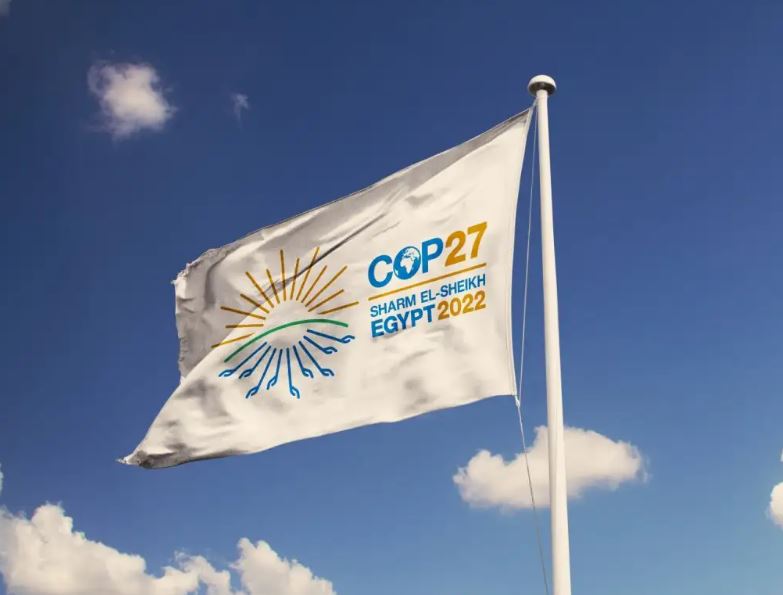New Delhi: A formal draft of a UN summit’s climate deal that came out Friday makes no mention of India’s call for phase down of all fossil fuels.
The draft showed little progress on key issues like loss and damage funding, adaptation fund replenishment and a new collective quantified goal on climate finance.
It also omits references to the need for rich nations to attain “net-negative carbon emissions by 2030” and their disproportionate consumption of the global carbon budget, something that India and other poor and developing countries have stressed during the summit in Egypt.
The 10-page draft document is a refined version of the 20-page “non-paper” or an informal draft published by the UN Framework Convention on Climate Change (UNFCCC) at the climate change conference COP27 on Thursday.
The “draft text on COP 27’s overarching decision” reaffirmed that limiting global warming to 1.5 degrees Celsius requires rapid and deep emission cuts.
It puts a “placeholder” for funding arrangements to address loss and damage, meaning that parties are yet to reach a consensus on the matter.
Loss and damage refer to the consequences of climate change that go beyond what people can adapt to, or when options exist but a community doesn’t have the resources to access or utilise them.
A placeholder also exists for a new global climate finance target, also known as the new collective quantified goal on climate finance, from the floor of USD 100 billion per year.
Financing or a new fund for addressing loss and damage — for example money needed for relocating people displaced by floods — has been a long-pending demand of poor and developing countries, including India.
Developed nations, particularly the US, have opposed this new fund over fears it will hold them legally liable for massive damages caused by climate change.
In a bid to prevent a collapse of talks, European Union chief negotiator Frans Timmermans proposed a plan that tied loss and damage with emission cuts.
The success of the talks depends on progress on this matter. In exchange for the fund, the proposal asks countries to peak emissions before 2025 and phase down all fossil fuels and not just coal. Details of the fund will be worked out next year.
Another important aspect of the proposal is that big developing countries like China would need to pay into this fund as it would have a ‘broad funder base’.
The draft “encourages the continued efforts to accelerate measures towards the phase down of unabated coal power and phase out and rationalize inefficient fossil fuel subsidies, in line with national circumstances and recognizing the need for support towards just transitions”.
There is no mention of India’s call for phasing down all fossil fuels and not just coal.
Experts said it was surprising that the call for phasing down all fossil fuels, the COP’s second-most discussed new element, didn’t find a place in the draft text.
Some also said it seemed more like a statement from India and not its stand, a tactical move to deflect criticism over the use of coal.
US climate envoy John Kerry had reportedly said on Thursday it would support the proposal as long as it focuses on “unabated oil and gas”.
The draft reaffirms that limiting global warming to 1.5 degrees Celsius requires rapid, deep and sustained reductions in global greenhouse gas emissions, including reducing carbon dioxide emissions by 45 per cent by 2030 relative to the 2010 level, net zero around mid-century and deep reductions in other greenhouse gases.
It calls for a roadmap for the delivery of the committed doubling of adaptation finance by 2025. It has been estimated that adaptation finance was roughly USD 20 billion per year in 2019. A doubling of efforts would bring it near the USD 40bn mark.
The draft deal also expresses grave concern that the goal of developed countries to jointly mobilise USD 100 billion per year by 2020 had not yet been met.
It urges them to meet the target and “address the shortfall to USD 100 billion since 2020”.
The document notes global climate finance in 2019-2020 was estimated to be USD 803 bn.
This amount is 31-32 per cent of the annual investment needed for the global temperature rise to follow a pathway of a well-below 2-degree or a 1.5-degree Celsius.
“This level of climate finance is also below what one would expect in the light of the investment opportunities identified and the cost of failure to meet climate stabilization targets,” it said.
The draft cover text commends the parties that submitted updated nationally determined contributions (NDCs). India submitted its updated NDCs to the UNFCCC in August.
The formal draft also urges parties to communicate new or updated long-term low-emission development strategies to enhance contribution to global net zero emissions by or around mid-century.
It is in line with the best available science and aligned with the NDCs after taking into account different national circumstances.
“It’s good to see there’s no backsliding on the words coming out of COP26 last year,” said Dave Jones, global programmes lead at think tank Ember.
At the highest level, it reaffirms the resolution to pursue efforts to limit the temperature increase to 1.5 degrees, but it gives until next November for countries to update their 2030 plans, Jones said.
“Coal phase-down still stands. There is one step forward, which is that ‘renewable energy’ is mentioned three times, taking away the emphasis from other less desirable forms of ‘low-carbon’ or ‘clean’ energy, which is a positive development,” Jones said.
“Renewable energy hasn’t been mentioned in a COP cover decision since 2015.
PTI
